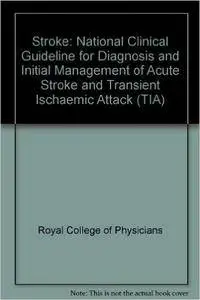Stroke: National Clinical Guideline for Diagnosis and Initial Management of Acute Stroke and Transient Ischaemic Attack (TIA) by Royal College of Physicians
English | July 22, 2008 | ISBN: 1860163394 | 123 Pages | PDF | 1 MB
English | July 22, 2008 | ISBN: 1860163394 | 123 Pages | PDF | 1 MB
Stroke is a preventable and treatable disease. It can present with the sudden onset of any neurological disturbance, including limb weakness or numbness, speech disturbance, visual loss or disturbance of balance. Over the last two decades, a growing body of evidence has overturned the traditional perception that stroke is simply a consequence of aging which inevitably results in death or severe disability. Evidence is accumulating for more effective primary and secondary prevention strategies, better recognition of people at highest risk and thus most in need of active intervention, interventions that are effective soon after the onset of symptoms, and an understanding of the processes of care that contribute to a better outcome. In addition, there is now good evidence to support interventions and care processes in stroke rehabilitation. In the UK, the National Sentinel Stroke Audits have documented changes in secondary care provision over the last 10 years, with increasing numbers of patients being treated in stroke units, more evidence-based practice, and reductions in mortality and length of stay. In order for evidence from research studies to improve outcomes for patients, it needs to be put into practice. National guidelines provide clinicians, managers and service users with summaries of evidence and recommendations for clinical practice. Implementation of guidelines in practice, supported by regular audit, improves the processes of care and clinical outcome.



